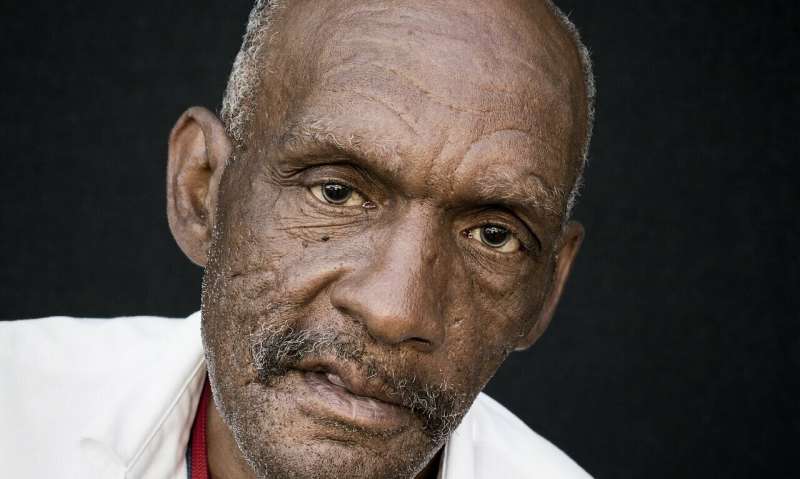This article has been reviewed according to Science X's editorial process and policies. Editors have highlighted the following attributes while ensuring the content's credibility:
fact-checked
trusted source
proofread
Community spaces may promote healthy aging for rural Black, Hispanic adults

Millions of Americans over the age of 65 lack access to the social and emotional support they need for healthy aging, according to the Centers for Disease Control and Prevention. Non-white individuals in rural communities are especially susceptible. New research from Penn State, published in Rural Sociology, has found that the presence of social infrastructure—shared community spaces that are free or low-cost to visit—in rural communities may help provide social and emotional support and promote healthy aging among older, non-white adults.
Danielle Rhubart, assistant professor of biobehavioral health and demography at Penn State and lead author of the study, explained that when people retire, they often lose social connections at work. Then, older friends, family members and acquaintances may die. Over time, many lose abilities like sight that help them participate in activities or maintain skills like driving. These changes can lead to a loss of social support.
One in ten white adults over age 65 reported not receiving the emotional support they need, according to the researchers. The problem is more significant for non-white older adults, one in five of whom reported not receiving the emotional support they need. This can be especially true in rural areas, where access to social infrastructure like churches, coffee shops, libraries, parks, gyms and hair salons may be more limited.
In their paper, the researchers evaluated whether social infrastructure increases social and emotional support. They examined individuals' perceptions of support using data from 110,850 rural older adults in the CDC's Behavioral Risk Factors Surveillance System paired with social infrastructure data from the National Neighborhood Data Archive.
The researchers found that Black and Hispanic older adults were nearly two times more likely to report rarely or never getting the support they need relative to non-Hispanic, white older adults. The researchers noted, however, that rural Hispanic and Black older adults living in counties with more social infrastructure were more likely to report at least sometimes getting the support they need, compared with those living in counties with less social infrastructure.
Rhubart said that social infrastructure can provide an important support system for people's mental and emotional well-being.
"As people age, their social networks tend to shrink," Rhubart said. "Retirement often starts the process, and networks continue to contract as people age. Additionally, reduced personal abilities can limit people's opportunities to access and engage the social networks that remain."
This reduced social contact contributes to reduced levels of support, and lower levels of social and emotional support can be related to a range of health problems including cognitive decline, depression, dissatisfaction with life and even early death.
Black and Hispanic older adults are at even more risk, according to Jennifer Kowalkowski, postdoctoral scholar in biobehavioral health and study co-author.
"Historically, racist practices in society have contributed to poorer health among Hispanic and Black older adults," Kowalkowski said. "Connecting with others is often important for these groups—they have larger and more diverse social networks than white older adults—and it is through these connections that Hispanic and Black older adults are able to get the kind of support they need to maintain their health and well-being. The presence of social infrastructure provides physical spaces for these social networks to be developed and maintained."
People's diminishing networks need not result in their total loss of support, however. A conceptual model used by the researchers proposes that all older people in a community benefit from social infrastructure, not just those who visit social infrastructure. The model suggests that a combination of intimate and casual encounters in these spaces leads to interactions that increase everyone's senses of support.
A scenario that illustrates the theory, according to Rhubart, could be to consider social and emotional support for a hypothetical older woman with poor vision who does not often leave the house. If her brother runs into her pastor at a coffee shop and tells the pastor about his sister's condition, the pastor may visit the woman. So, despite the woman not visiting the church or the coffee shop, her support is increased because both spaces exist in her community. And even if the pastor doesn't visit the woman, hearing about her brother's interaction and conversation with the pastor may help her feel connected to a larger network of support.
Rhubart said the findings in this research partially validate this theory, and she plans to continue research into the potential of social infrastructure to improve people's health and well-being.
"As policymakers work to address loneliness and mental and emotional health among older adults, they do so with limited resources," Rhubart said. "While direct support for individuals will always be critically important, this research is exciting because it suggests that we may be able to make inroads into supporting mental and emotional health by working at the community level. Research has shown that sidewalks and parks are important for supporting physical health. We need to apply this same community-level approach to mental and social health. Our research here suggests that social infrastructure might be a good place to start."
Logan Wincott, undergraduate student in the Department of Sociology and Criminology and Rhubart's former research assistant, also contributed to this research.
More information: Danielle Rhubart et al, The Built Environment and Social and Emotional Support among Rural Older Adults: The Case for Social Infrastructure and Attention to Ethnoracial Differences☆, Rural Sociology (2023). DOI: 10.1111/ruso.12491



















